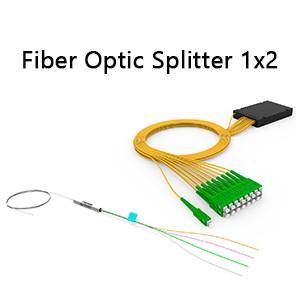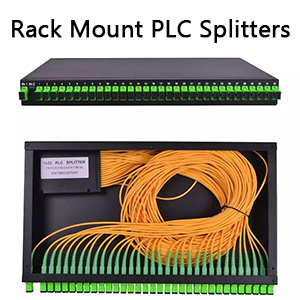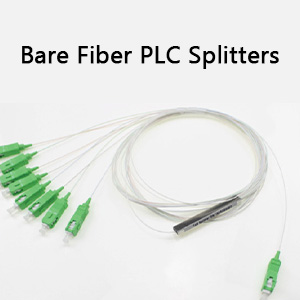Against the backdrop of rising bandwidth demands within fiber infrastructure, optical add/drop multiplexers (OADMs) have emerged as key components in modern optical networks. These passive devices are able to selectively operate wavelength channels and enable efficient wavelength management without the need for additional power supplies. This article explains the fundamentals, configurations, and applications of OADMs, highlighting their indispensable role in enabling flexible, cost-effective, and scalable optical network architectures.
OADM Components
An OADM typically consists of three parts: an optical multiplexer and demultiplexer, a method to reconfigure paths between the optical demultiplexer and the optical multiplexer, and a set of ports for adding and dropping signals. A multiplexer is used to couple two or more wavelengths into the same fiber. Reconfiguration can then be achieved through a fiber distribution frame or an optical switch that directs wavelengths to an optical multiplexer or drop port. A demultiplexer separates multiple wavelengths into the fiber and directs them to multiple fibers.
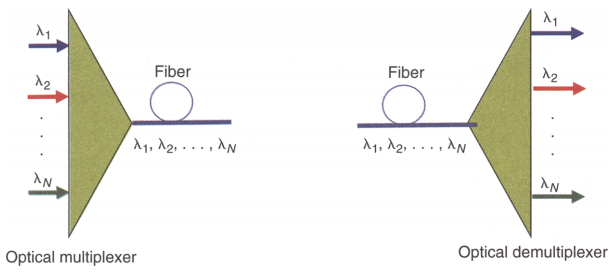
OADM Configurations and Functionality
OADMs have two basic configurations: using dielectric thin film filters (TFFs) and fiber Bragg gratings (FBGs).
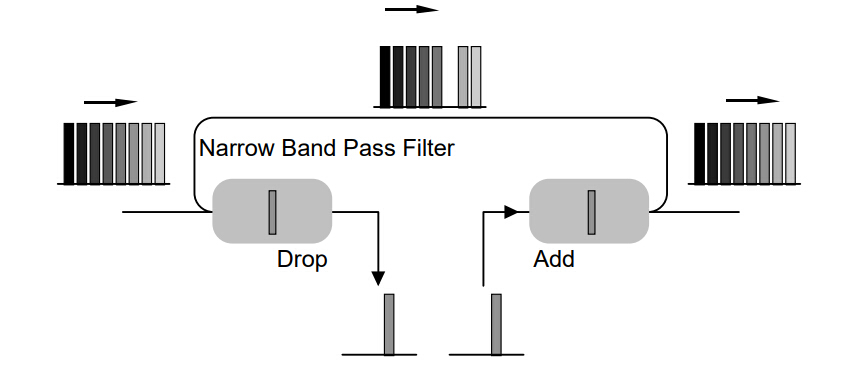
Fixed Optical Add/Drop Multiplexer (FOADM)
FOADM was originally developed to improve the transmission of “through” traffic in the network without expensive OEO regeneration. FOADM uses fixed filters to add/drop selected wavelength “bands” and let the remaining wavelengths pass through the node. Static wavelength filtering technology eliminates the cost and attenuation of demultiplexing all DWDM signals in the signal path.
Reconfigurable Optical Add/Drop Multiplexer (ROADM)
ROADM was developed to provide flexibility in redirecting optical flows, bypassing failed connections, allowing minimal service disruption, and adapting or upgrading optical networks to different WDM technologies. It uses wavelength selective switches (WSS). WSS has 8-dimensional cross-connects and provides fast service startup, remote cross-connects, and WDM mesh networks.

Applications of OADM
In traditional long-haul transmission systems, the focus has been on capacity and transmission distance. However, in metro/access networks, low cost and system flexibility are critical. Optical Add/Drop Multiplexer (OADM) meets both needs and supports standard network topologies such as point-to-point and ring. OADM can selectively insert, remove or route specific channels on an optical link, enhancing network flexibility.
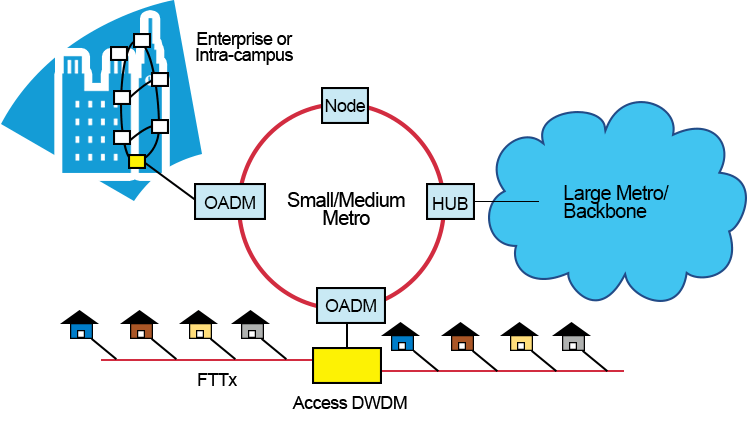
Conclusion
In order to reduce costs in high-capacity transmission, signal processing needs to shift to optical form, bypassing traditional optical-to-electrical conversion. OADMs are essential in optical signal processing. The use of OADMs in optical communications can flexibly add or remove signals of different wavelengths, simplify component configuration, and reduce overall network costs. Despite their small size, OADMs will continue to play a key role in the development of compact, integrated and cost-effective equipment.

